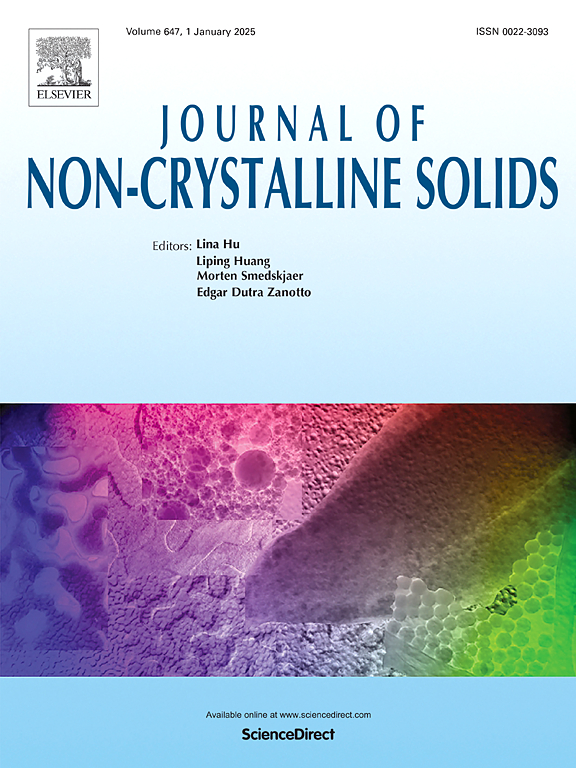固体中玻色子峰与准局域模式的普遍关联
IF 3.2
3区 材料科学
Q1 MATERIALS SCIENCE, CERAMICS
引用次数: 0
摘要
理想晶体的低温比热容Cph可以用经典的Debye T3定律有效地描述。然而,在非晶固体和缺陷晶体中,减少的声子热容量Cph/T3始终偏离Debye模型,表现出众所周知的非Debye过剩异常,即玻色子峰值(BP)。在这项工作中,我们系统地研究了大范围固体的低温热容Cp,发现Cp可以用软势模型准确地描述。这些固体的Cph/T3在特征温度TC附近开始偏离Debye预测,并在TBP (BP的特征温度)处表现出明显的过剩峰。我们发现玻璃和晶体中的还原BP都表现出一种普遍的行为,这种行为可以用经验函数Δ*来描述。此外,在固体中,无论其拓扑结构如何,都可以观察到TC和TBP之间的线性相关,这表明BP与固体中的准局域模式之间存在普遍联系。这一结果为软电位模型提供了实验支持,为解释固体中低温异常和BP的形成提供了基础。本文章由计算机程序翻译,如有差异,请以英文原文为准。
Universal correlation between boson peak and quasi-localized modes in solids
The low-temperature specific heat capacity Cph of ideal crystals can be effectively described by the classical Debye T3 law. However, in amorphous solids and defective crystals, the reduced phonon heat capacity, Cph/T3, consistently deviates from the Debye model, exhibiting the well-known non-Debye excess anomaly, namely the boson peak (BP). In this work, we systematically study the low-temperature heat capacity Cp across a wide range of solids, finding that Cp can be accurately described by the soft potential model. The Cph/T3 of these solids begins to deviate from the Debye prediction near the characteristic temperature TC and displays a pronounced excess hump at TBP, which is the characteristic temperature of BP. We find that the reduced BP in both glasses and crystals exhibits a universal behavior, which can be described by an empirical function Δ*. Furthermore, a linear correlation between TC and TBP is observed among solids regardless of their topology, which reveals a universal connection between the BP and quasilocalized modes in solids. The result provides experimental support for the soft potential model, which may underpin the explanation of low-temperature anomalies and the formation of the BP in solids.
求助全文
通过发布文献求助,成功后即可免费获取论文全文。
去求助
来源期刊

Journal of Non-crystalline Solids
工程技术-材料科学:硅酸盐
CiteScore
6.50
自引率
11.40%
发文量
576
审稿时长
35 days
期刊介绍:
The Journal of Non-Crystalline Solids publishes review articles, research papers, and Letters to the Editor on amorphous and glassy materials, including inorganic, organic, polymeric, hybrid and metallic systems. Papers on partially glassy materials, such as glass-ceramics and glass-matrix composites, and papers involving the liquid state are also included in so far as the properties of the liquid are relevant for the formation of the solid.
In all cases the papers must demonstrate both novelty and importance to the field, by way of significant advances in understanding or application of non-crystalline solids; in the case of Letters, a compelling case must also be made for expedited handling.
 求助内容:
求助内容: 应助结果提醒方式:
应助结果提醒方式:


